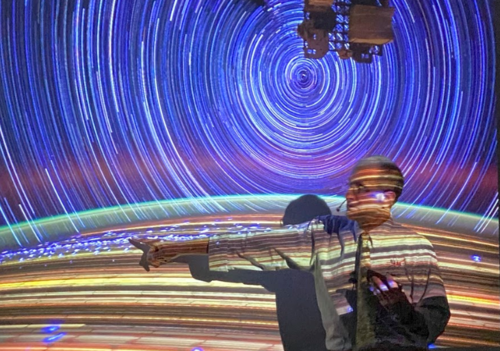
On Wednesday, December 4, 2019, the Yale Center for Collaborative Arts and Media welcomed artist and NASA Astronaut Don Pettit to present an Astronaut’s Guide to Photography from Space. This presentation was a part of the CCAM’s Wednesday Wisdom visiting artist series. Throughout the hour, Pettit displayed many of his astonishing photographs, and discussed artful details about taking photos while living on the International Space Station.
Pettit began by asking the audience to consider what it means to experience a frontier. In a new landscape, one’s normal intuition doesn’t apply, and observations are made that cannot always be explained. Even if others have ventured into that frontier before you, there are endless new observations to be made from your unique perspective. This is how Pettit approaches photography from space - he is experiencing a new frontier, and even though many people have taken pictures from the ISS before, he brings his own observations to create new photography.
On the International Space Station, photography is very different than it is here on earth, with its own rewards and challenges. Pettit began by displaying pictures from the cupula, a section of the station with large windows perfect for photography. In the cupula, pictures must be carefully planned, as one may only have a couple seconds to capture a desired shot of the Earth. These pictures include incredible images of comets, thunderstorms, cities at night, aurora, and more. Pettit explained the precision with which each photo had to be created, whether combining multiple photos, blocking out unwanted light or reflection, or using different exposure times. He also introduced the differences between space photography done by a human or by a machine. The space station includes many machines for capturing images, which are very specifically programmed for an “ideal” photo for the purpose of scientific experimentation. However, when captured by a human, images can have new compositional elements possible only using a human eye.
When living on the space station, Pettit also found himself inventing things with whatever tools and materials were available to him. Most notably he invented an open container that worked in zero gravity by using surface chemistry to force liquids to behave as they do on Earth. This cup allowed astronauts, who previously had only been able to drink out of bags, to enjoy a cup of coffee in a much more human way. It has since been widely studied by scientists and researchers, won design awards, and even has a place in the archives of the MoMA in New York City.
Pettit ended his presentation by returning to the idea of what it means to go into a frontier. He encouraged his audience to continue exploring and observing, even if others have done the same before them. Through photography, he has been able to do just what with his experience on the International Space Station, and generate art alongside scientific exploration.
Image Credits: Peter Blacksberg
Article written by CCAM Temporary Expert Sophia DeVito